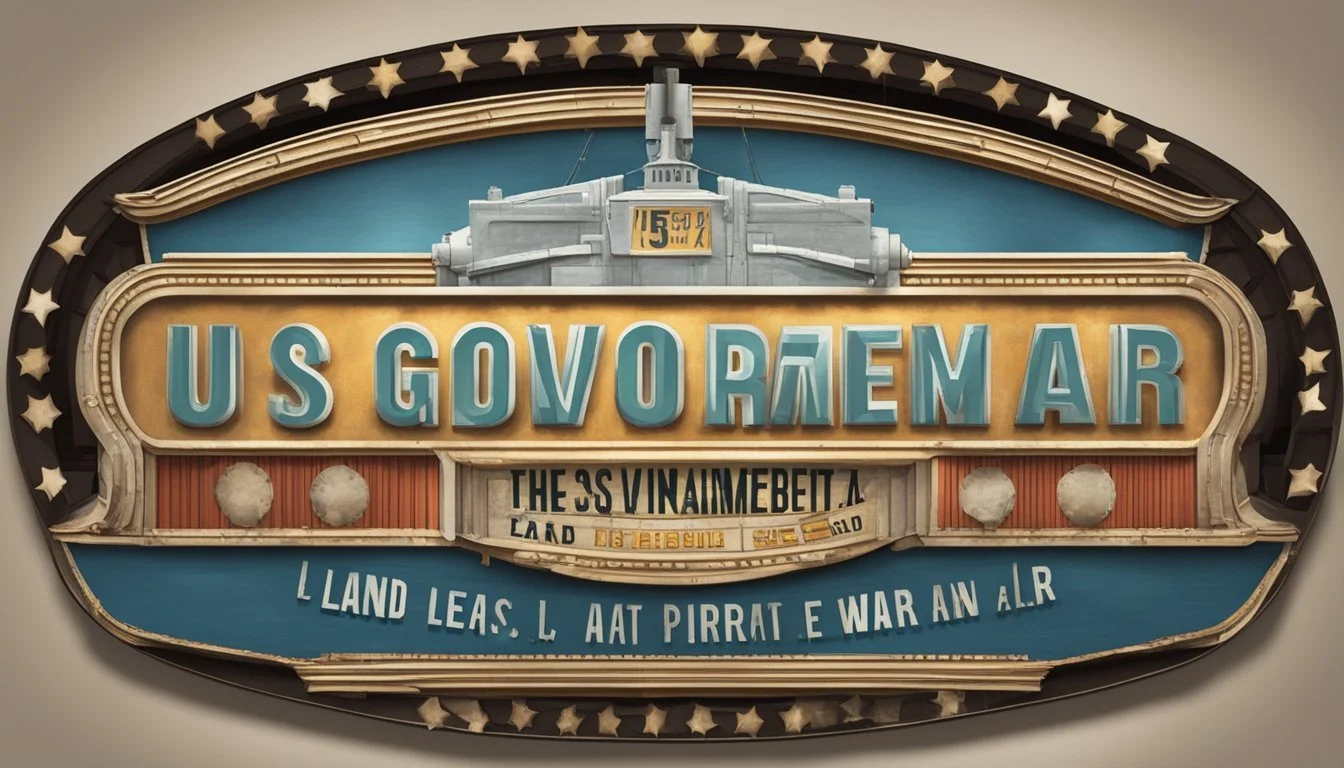Top Documentaries of 1950
Pioneering Films That Shaped the Genre
The 1950s marked a significant era for documentary filmmaking, with many groundbreaking works emerging during this decade. Documentaries of this period captured the spirit of post-war America and explored various aspects of society, culture, and the human experience. These films provided viewers with unique insights into the world around them, often tackling subjects that were previously unexplored or overlooked.
Several documentaries from the 1950s are now considered classics of the genre, influencing future generations of filmmakers and shaping the way we understand and appreciate non-fiction cinema. From intimate portraits of individuals to sweeping examinations of social issues, these films showcased the power of the documentary form to inform, educate, and inspire audiences. The best documentaries of the 1950s continue to be studied and celebrated for their artistic merit, historical significance, and enduring impact on the field of documentary filmmaking.
1) The Titan: Story of Michelangelo (1950)
The Titan: Story of Michelangelo is a captivating documentary that explores the life and works of the renowned Renaissance artist. Directed by Robert J. Flaherty, Richard Lyford, and Curt Oertel, this film offers viewers an in-depth look at Michelangelo's artistic journey.
The documentary showcases Michelangelo's most celebrated creations, from his early works to his masterpieces that brought him lasting fame. It provides detailed examinations of his sculptures, paintings, and architectural designs against the backdrop of his era.
Originally created as a German/Swiss production in 1938, the film was re-edited and released in 1950 with English narration by Fredric March. This version also featured a new musical score, enhancing the viewing experience.
The Titan: Story of Michelangelo received critical acclaim, winning the Academy Award for Best Documentary Feature. Its success highlights the enduring fascination with Michelangelo's genius and the impact of his art on world culture.
2) The Life of Beethoven
"The Life of Beethoven" (1950) stands out as a notable documentary from the era. This film explores the renowned composer's journey from his early days in Bonn to his rise as a musical genius in Vienna.
The documentary highlights Beethoven's struggles with progressive hearing loss and its impact on his work. It showcases his determination to continue composing despite this challenge, leading to the creation of some of his most celebrated pieces.
Viewers gain insight into Beethoven's personal life, including his relationships and the political climate of his time. The film incorporates excerpts from his compositions, providing a musical backdrop to the narrative of his life.
"The Life of Beethoven" uses period reenactments and narration to bring the composer's story to life. It offers a balanced portrayal of Beethoven as both a brilliant artist and a complex individual.
This documentary serves as an informative introduction to Beethoven's life and works for audiences of its time. It remains a valuable historical record of how the composer was perceived in the mid-20th century.
More information on Ludwig van Beethoven
3) Mediterranean—The Prison of the Sea
"Mediterranean—The Prison of the Sea" (1950) offers a captivating look at the Mediterranean region's complex history and geography. The documentary explores how the sea both connects and isolates the surrounding lands.
It examines the ancient civilizations that flourished along its shores, including the Egyptians, Greeks, and Romans. The film highlights the Mediterranean's role in trade, cultural exchange, and conflict throughout the centuries.
The documentary also delves into the unique ecosystems of the Mediterranean Sea, showcasing its diverse marine life and coastal habitats. It discusses the environmental challenges facing the region in the mid-20th century.
Stunning cinematography captures the beauty of Mediterranean landscapes, from sun-drenched beaches to rugged cliffs. The film's narrator provides insightful commentary on the interplay between human activity and the natural world.
"Mediterranean—The Prison of the Sea" stands out as a notable documentary of 1950, offering viewers a comprehensive exploration of this historically significant and ecologically rich region.
More information on Mediterranean documentaries
4) A King Is Born
"A King Is Born" is a notable documentary from 1950 that explores the birth of Jesus Christ. The film presents the Biblical account of the Nativity in a reverent and historically-informed manner.
The documentary uses a combination of narration and reenactments to bring the story to life. It covers key events such as the Annunciation, Mary and Joseph's journey to Bethlehem, and the birth of Jesus in a manger.
"A King Is Born" stands out for its attention to period details and its efforts to provide historical context. The film presents the political and social climate of Judea under Roman rule, helping viewers understand the circumstances surrounding Jesus' birth.
The documentary also examines the significance of prophecies and their fulfillment in the Nativity story. It discusses the role of figures like King Herod and the Three Wise Men in the narrative.
"A King Is Born" (1950) remains a respected work for its thoughtful approach to a pivotal moment in Christian history. More information
5) This Is America (1950)
This Is America stands out as a significant documentary series from the 1950s. Produced by RKO-Pathé, it offered viewers a glimpse into various aspects of American life and culture.
Each episode focused on a different topic, ranging from sports and entertainment to industry and social issues. The series aimed to educate and inform audiences about the diverse facets of American society.
This Is America provided a unique perspective on post-World War II America. It captured the nation's spirit during a time of economic growth, technological advancement, and social change.
The series featured narration by prominent voices of the era, adding credibility and depth to its storytelling. Its blend of informative content and engaging visuals made it a popular choice among viewers.
This Is America remains a valuable historical resource, offering modern audiences a window into 1950s America through its authentic portrayal of the time.
More information on This Is America
6) All My Babies
"All My Babies: A Midwife's Own Story" (1953) is a groundbreaking documentary that offers a unique glimpse into midwifery in the rural American South. Directed by George C. Stoney, the film follows Mary Francis Hill Coley, an African American midwife in Albany, Georgia.
The documentary showcases Coley's dedication to her profession as she provides care to expectant mothers throughout their pregnancies. It depicts her attending births and offering postnatal support, highlighting the crucial role midwives played in communities with limited access to medical facilities.
Produced by the Georgia Department of Public Health, "All My Babies" served as an educational tool for training midwives. The film emphasizes proper hygiene practices and promotes collaboration between midwives and the modern healthcare system.
Despite its initial purpose as a training film, "All My Babies" gained recognition for its artistic merit and cultural significance. In 2002, it was selected for preservation in the United States National Film Registry by the Library of Congress.
More information on All My Babies
7) The Last Bomb (1945)
"The Last Bomb" is a powerful documentary that showcases the final stages of the U.S. bombing campaign against Japan during World War II. Directed by the U.S. Army Air Forces, this film provides a gripping account of B-29 Superfortress missions over Japan.
The documentary highlights the strategic importance of the Mariana Islands, including Saipan, Guam, and Tinian, as launch points for these critical bombing raids. It features footage of General Curtis LeMay, who played a pivotal role in the Pacific air campaign.
"The Last Bomb" offers viewers a rare glimpse into the preparation, execution, and aftermath of these high-altitude bombing missions. The film combines on-the-ground footage with aerial shots, providing a comprehensive view of the operations.
This documentary received critical acclaim and was nominated for an Academy Award for Best Documentary Feature. It serves as both a historical record and a piece of wartime propaganda, offering insights into the final months of World War II in the Pacific theater.
More information on "The Last Bomb"
8) Night Mail (1936)
Night Mail stands as a landmark British documentary from the 1930s, not the 1950s as initially suggested. Directed by Harry Watt and Basil Wright, this 24-minute film showcases the nightly postal train journey from London to Scotland.
The documentary captures the intricate workings of the postal system, following the train's progress and the dedicated staff who keep it running. Its innovative approach to storytelling and cinematography set new standards for documentary filmmaking.
Night Mail's most famous segment features a poem by W.H. Auden, accompanied by music from Benjamin Britten. This creative collaboration elevates the film beyond a mere factual account, turning it into a poetic celebration of modern transportation and communication.
Produced by the General Post Office (GPO) Film Unit, Night Mail exemplifies the British documentary movement of the 1930s. It skillfully blends realism with artistic expression, offering viewers a unique glimpse into an essential public service.
The film's influence extends far beyond its era, inspiring future generations of documentarians and earning its place among the most significant short films ever made.
More information on Night Mail
9) Van Gogh
"Lust for Life" (1956) stands out as a notable film about Vincent van Gogh from the 1950s. Directed by Vincente Minnelli, this biographical drama stars Kirk Douglas as the troubled Dutch artist.
The film vividly portrays van Gogh's tumultuous life and artistic journey. It explores his struggles with mental health, his passionate approach to painting, and his complex relationships with family and fellow artists.
Kirk Douglas delivers a powerful performance as van Gogh, capturing the artist's intensity and inner turmoil. The film's vibrant cinematography brings van Gogh's iconic paintings to life on screen.
"Lust for Life" received critical acclaim and earned several Academy Award nominations. It remains a significant contribution to the cinematic portrayal of van Gogh's life and work.
More information about "Lust for Life" on IMDb
10) The U.S. Government at War: Land and Lifeboat (1950)
This documentary explores the U.S. government's role during World War II, focusing on both land operations and maritime efforts. It highlights key decisions made by military and political leaders that shaped the course of the war.
The film examines major land campaigns, including the D-Day invasion and the Battle of the Bulge. It also delves into the U.S. Navy's crucial role in protecting Allied shipping and combating German U-boats in the Atlantic.
Rare footage showcases the inner workings of wartime government agencies like the War Production Board and Office of Price Administration. Interviews with high-ranking officials provide insight into the challenges of coordinating a massive war effort.
The documentary pays special attention to the Merchant Marine and its vital contribution to the Allied cause. It depicts the dangerous conditions faced by civilian sailors who braved enemy attacks to deliver supplies across the ocean.
Impact of Documentaries in the 1950s
Documentaries in the 1950s shaped public opinion and advanced filmmaking techniques. They brought new perspectives on social issues and nature to mainstream audiences.
Cultural Influence
1950s documentaries exposed viewers to diverse subjects and ideas. Disney's "True-Life Adventure" series captivated audiences with stunning wildlife footage. It sparked interest in nature conservation and influenced environmental awareness.
Social documentaries shed light on pressing issues. They tackled topics like poverty, civil rights, and Cold War tensions. These films challenged viewers' preconceptions and stimulated public discourse.
Documentaries also preserved cultural moments. "The Mystery of Picasso" (1956) captured the artistic process of Pablo Picasso. It provided valuable insights into the work of a renowned artist.
Technological Advancements
The 1950s saw significant improvements in documentary filmmaking technology. Lightweight cameras allowed for more mobile and intimate shooting styles. This led to the development of cinéma vérité techniques.
Improved sound recording equipment enhanced the authenticity of documentaries. Filmmakers could capture sync sound, adding depth to their storytelling.
Color film became more accessible, enriching visual storytelling. Disney's nature documentaries utilized vibrant color to showcase wildlife in unprecedented detail.
Advancements in editing techniques allowed for more dynamic storytelling. Compilation documentaries like "Victory at Sea" (1952-1953) effectively combined archival footage to create compelling narratives.
Notable Directors and Their Styles
The 1950s saw an emergence of innovative documentary filmmakers who pushed the boundaries of the genre. These directors employed unique storytelling techniques and pioneered new approaches to non-fiction filmmaking.
Innovative Storytelling Techniques
Robert Flaherty, known as the "father of documentary film," continued to influence the genre in the 1950s. His 1950 film "Louisiana Story" blended poetic imagery with documentary realism, creating a lyrical portrayal of Cajun life.
Frederick Wiseman introduced the "direct cinema" style, eschewing narration and interviews in favor of observational footage. This approach aimed to present unbiased reality, allowing viewers to draw their own conclusions.
John Grierson, while not directing in the 1950s, remained influential through his production work. He championed the use of documentary as a tool for social change and education.
Pioneering Filmmakers
Bert Haanstra, a Dutch filmmaker, gained international recognition with his 1958 short "Glass." The film showcased his ability to find rhythm and beauty in industrial processes.
Alain Resnais pushed the boundaries of documentary form with "Night and Fog" (1956). This powerful film about Nazi concentration camps combined archival footage with contemporary shots, creating a haunting meditation on memory and history.
Lionel Rogosin's "On the Bowery" (1956) blurred the line between documentary and fiction. Using non-professional actors from New York's skid row, Rogosin created a gritty, realistic portrayal of life on the margins.










